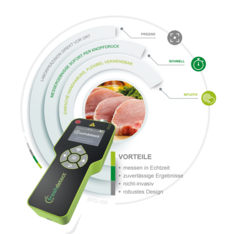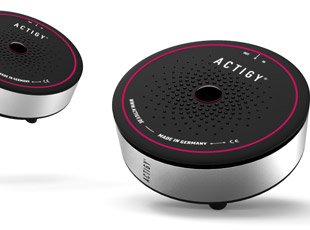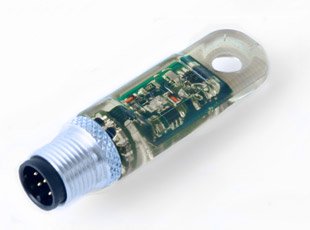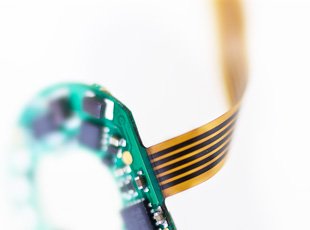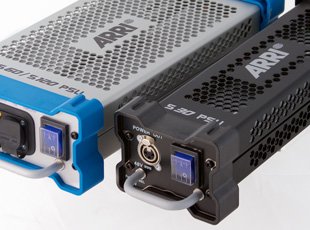
Next generation EMS -
Hardware accelerator on all levels
The storm of digitalisation and artificial intelligence is getting the manufacturers of products that have never been questioned before into trouble. Meanwhile, small innovative technology start-ups are reinventing the wheel. These developments are also rocking the EMS industry.
Background
People in the 21st century are once again living in the middle of technological upheaval like those at the beginning of the 18th century with the emergence of the steam engine – and yet they hardly notice it.
In 2017, Amazon had already 45,000 robots working in its logistics. The International Federation of Robotics (IFR) published its world robot statistics for 2017, which forecasts almost 2 million new industrial robots worldwide by 2020. Chinese firms are planning to only use a small human workforce for all dangerous, dirty and tedious activities and want to achieve a ratio of 150 robots to 10.000 workers by 2020.
The creation of so-called “dark factories” with 24/7 work output, 250% production increase and reduction of defects by 80% is a foregone conclusion and can already be experienced in China; the new generation cobots, or rather collaborative robots, will move into all key industries, from the investment and consumer goods industry to smart home, logistics & transport, mechanical engineering & automation through to medical engineering. The entire supply industry is being swept along in this maelstrom and is doing cartwheels with new business models, all kinds of services, starting with IoT insurances for toothbrushes, micro-manufacturing or personal fabrication. In other words: We are living in a fundamental paradigm change of our lifeworld and work environment.
The „extended workbench“ is being replaced by a new generation of EMS product realisers and hardware accelerators, who are relaunching a large number of old products, help young businesses on the market to develop prototypes from an idea in five days and then present new big hitters with micromanufacturing and personal fabrication.
»Successful EMS providers must adapt and develop into hardware accelerators – or die«, said Dr Ralf Hasler, CEO of the Lacon Group. »It was never so easy and yet at the same time it was never so challenging, to develop, produce and launch hardware products on the market«
In view of rapidly changing hardware products, Lacon’s recommendation is clear: Know your own products and their properties inside out, promote free thinking beyond the product boundary and find a hardware accelerator:
| Manufacturer/Startup | EMS accelerator |
|---|---|
| Everyone is a maker. Think outside the box! Concentrate on the product properties and your USP. Enjoying the product, creativity and constant movement will give you advantages over the established markets. | From the idea to the prototype in 3-2-1: Fast prototyping, 3D models, specialists for implementation in the trades must be a custom-fit and come from the accelerator. |
| Data is king! Algorithms, data models and application-specific parameters are the basis of your success, not the hardware or production. | Coordination of the entire production environment: components, electronics, cables, software and box build are all in one location and can produce a new revision in days in desktop manufacturing. |
| Participate in online resources and communities! Nowadays product development takes place online in the cluster, but is capitalised in the company. Use the large number of open source tools available. | Direct investment and distribution: In case of financing, an accelerator will provide the ways and means to place your products on the market (EMS accelerators are the better venture capitalists). |
| Activate prosumers! Personalisation is the new standard. Market success is acquiring an identification-endowing character. Viral marketing and authenticity make the difference. | Rising technology demands require deep-tech skills: The EMS accelerator must be connected, smart, personalised, specialised and intelligent. |
The next generation of EMS providers, in the view of Dr Hasler, is characterised by the ability to master all steps from the prototype to the product and to make the time-to-market practically disappear. They are characterised by:

- High-performance software tools for the concept, for the detail engineering and for simulation of the application and for creating test routines for the end-of-line test. The software tools enable continuous optimisation and improvement of the product during development. It’s not the first design that must fit, but a basic framework, which is steadily and continuously optimised, before it is implemented as hardware.
- Rapid prototyping: whether assembled printed board or moulding: 3D printing, printed boards, special services of electronic distributors or EMS service providers: Prototyping now no longer takes months, but is a matter of mere days or weeks. A proof of concept or visualisation sample is now created with little effort and minimum time. This process can also be easily iterated.
- Worldwide transparency and high availability of development modules: What started 20 years ago with Linux has now become a universe of open source solutions, for both hardware and for software: Whether usable Arduino routines or scalable 3D printing models or python program modules: ready-to-use solutions exist for many applications in all kinds of different domains.
- Crowdfunding & prosumer support: Online financing rounds with thousands of staunch users, consumers and investors, who in the best case also act as beta testers and skip three or four development steps or prevent missteps. The EMS hardware accelerator launches, coordinates and supports here too.
This now no longer takes place in Silicon Valley, but in the Chinese city of Shenzhen, where the way from the idea to the prototype takes place only two doors down. But in Dr Hasler’s view this should also happen in Germany, where innovation centres for start-ups like in Munich are still rare. Or among the new generation of EMS accelerators, who actively live out the “deep-tech” claim.
Hardware fulfils the connected, smart, personalized, specialized and intelligent standards. And this is precisely what reinventing the wheel means.
In Germany there continues to be an enormous potential of marketable and difficult to copy knowledge. In almost all major research facilities, whether the Max Planck firms, Fraunhofer institutes, Deutsche Luft- und Raumfahrtgesellschaft (to name but a few), billions of public funds are “burned” to draw scientific attention. Little interest and even less attention is paid to marketing and industrialising the knowledge acquired – despite several model efforts such as the Fraunhofer Ventures.
It remains to hope that the German government will take act resolutely to counteract this and finally become aware of the migrating intelligence. The Lacon Group leads the way and sees itself as a hardware accelerator for German manufacturers and tech start-ups and demands:

